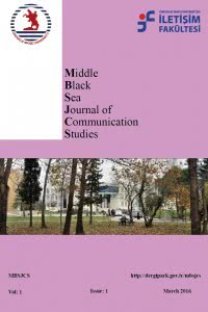Suç Katsayısı Sıfır: Psycho-Pass Anime Evreninde Sibyl Sistem Üzerine Bir İnceleme
Son yıllarda teknolojide yaşanan hızlı gelişmeler ve bu gelişmelere bağlı değişimlerle birlikte önceden yalnızca bilimkurgu eserlerinde rastlanabilecek birçok kavram, terim ve buluş gündelik hayatımızın sıradan bir parçası haline dönüşmüştür. Böyle bir değişimin yankıları, kısa ve uzun vadedeki etkileri ile sonuçları birçok disiplinin ve disiplinlerarası alanın araştırma çerçevesine girerken, sinema ve dizi sektörleri de giderek bu konuya daha çok eğilmeye başlamıştır. Bu çalışmada yukarıda sözü edilenler kapsamında Amerikalı bilimkurgu yazarı Philip K. Dick’in 1956 yılında yazdığı Azınlık Raporu (Minority Report) adlı kısa öyküsünde ilk kez kullandığı; 11 Eylül saldırılarından sonra terörle mücadele önlemleri kapsamında başta Amerikan ceza adaleti olmak üzere ceza adaletinin kendisinde meydana gelen paradigma kaymasının temel unsuru sayılabilecek suç-öncesi (pre-crime) kavramı ve suç-öncesi bağlamında şekillenen etik sorunlar, Japon anime televizyon serisi Psycho-Pass evrenindeki Sibyl Sistem üzerinden tartışılmaya çalışılarak; suç-öncesinin vadettiği suçtan arındırılmış bir toplum olasılığı argümantatif yöntem temelinde irdelenmiştir.
Anahtar Kelimeler:
Kriminoloji, Ceza Adaleti, Suç-Öncesi, Suç Önleme Tedbirleri, Bilimkurgu, Sibyl Sistem, Anime.
Crime Coefficient Zero: An Analysis of the Sibyl System in the Psycho-Pass Anime Universe
With the rapid developments in technology in recent years and the changes related to these developments, many concepts, terms and inventions that could only be seen in science fiction works have become an ordinary part of our daily life. While the echoes of such a change, its short and long-term effects and results have entered the research framework of many disciplines and interdisciplinary fields, movie and television industries have also begun to show more interest on this issue. In this study, firstly, the concept of pre-crime, which was used for the first time by the American science fiction writer Philip K. Dick in his short story Minority Report, written in 1956, will be examined. Secondly, the paradigm shift in criminal justice, especially in the American criminal justice system, will be discussed within the scope of counter-terrorism measures after the September 11 attacks, and its relationship with the pre-crime will be established. Finally, the ethical problems that arise in the pre-crime framework will be discussed over the Sibyl System in the universe of Japanese anime television series Psycho-Pass, and the possibility of a crime-free society promised by the pre-crime will be examined on the basis of the argumentative method.
Keywords:
Criminology, criminal justice, pre-crime, crime prevention measures, science fiction, sibyl system, anime,
___
- Dascal, Jennifer C. (2014). “Pre-Crime Restraints: The Explosion of Targeted, Noncustodial Prevention.” Cornell Law Review Issue 2: 327-387.
- Demirbaş, Timur (2012). Kriminoloji. Ankara: Seçkin Yayıncılık.
- Dolu, Osman (2012). Suç Teorileri: Teori Araştırma ve Uygulamada Kriminoloji. Ankara: Seçkin Yayıncılık. İçli, Gülşen Tülin (2013). Kriminoloji. Ankara: Seçkin Yayıncılık.
- Lieber-Milo, Shiri ve Nittono, H. (2019). “From a word to a commercial power – A brief introduction to the kawaii aesthetic in contemporary Japan”. Innovative Research in Japanese Studies, 3, 13–32.
- McCulloch, Jude ve Pickering, Sharon (2009). “Pre-Crime and Counter Terrorism: Imagining Future Crime in The ‘War of Terror’.” The British Journal of Criminology, Volume 49, Issue 5: 628–645.
- McCulloch, Jude ve Pickering, Sharon (2010). “Future threat: Pre-crime, state terror and dystophia in 21st century.” Criminal Justice Matters Volume 81: 32-33.
- McCulloch, Jude ve Wilson, Dean (2016). Pre-crime: Pre-emption, precaution and the future. London: Routledge.
- Pearson, Ashley vd. (ed) (2018). Law and Justice in Japanese Popular Culture: From Crime Fighting Robots to Duelling Pocket Monsters. New York: Routledge.
- Polat, Oğuz (2009). Kriminoloji ve Kriminalistik Üzerine Notlar. Ankara: Seçkin Yayıncılık.
- Sithigh, Mac Daithi ve Siems, Mathias (2019). “The Chinese Social Credit System: A Model for Other Countries?”. Modern Law Review Volume 82 Issue 6: 1034-1071.
- Susamcı, H. (2020). “Batı Resminde Kâhin Kadının Temsili Olarak Sibyl Betimleri.” Sanat Tarihi Yıllığı Sayı 29: 171-199.
- van Brakel, Rosamunde ve De Hert, Paul (2011). “Policing, surveilence and law in a pre-crime society: Understanding the consequences of technology based strategies.” Journal of Police Studies Volume 2011-3: 165-195.
- Vlahos, James (2012). “The Department of Pre-Crime.” Scientific American Vol. 306, No. 1: 62-67.
- Wood, Mark A. (2018). “Algorithmic tyranny: Psycho-Pass, science fiction and the criminological imagination.” Crime Media Culture 15(2).
- Zedner, Lucia (2001). “Dangers of Dystophias in Penal Theory.” Oxford Journal of Legal Studies Vol.22 No:2: 341-366.
- Zedner, Lucia (2007). “Pre-Crime and Post-Criminology?.” Theoretical Criminology 11: 261-281.
- https://psychopass.fandom.com/wiki/Psycho-Pass_Wiki. Erişim Tarihi: 30.10.2021.
- https://www.animenewsnetwork.com/interview/2014-09-17/gen-urobuchi/.78542. Erişim Tarihi: 30.10.2021.
- https://www.otakunews.com/Article/2463/an-interview-with-psycho-pass-director-naoyoshi-shiotani. Erişim Tarihi: 30.10.2021.
- https://kairosity.tumblr.com/post/126512937334/psycho-pass-official-profiling-2-interviews. Erişim Tarihi: 30.10.2021.
- https://liveatpc.com/delving-deep/. Erişim Tarihi: 30.10.2021.
- https://vocal.media/theSwamp/the-future-of-law-enforcement-the-chinese-social-credit-system. Erişim Tarihi: 31.10.2021.
- https://www.andrewjly.com/blog/2018/10/9/psycho-pass-prelude-to-social-credit-system. Erişim Tarihi: 31.10.2021.
- https://analyticsindiamag.com/the-consequences-of-a-real-life-psycho-pass/. Erişim Tarihi: 31.10.2021.
- https://onlinelibrary.wiley.com/doi/10.1111/1468-2230.12462. Erişim Tarihi: 31.10.2021.
- Yayın Aralığı: Yılda 2 Sayı
- Başlangıç: 2016
- Yayıncı: Ondokuz Mayıs Üniversitesi
